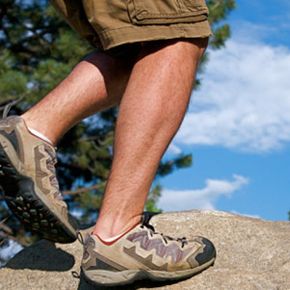When a typically pleasant run turns into a painful chore, shin splints could be the cause of your trouble. Shin splints -- less commonly known as medial tibial stress syndrome -- occur when accumulated stress injures the inside (medial) part of your tibia (shinbone). There isn't much padding on your shinbone, but there is a thin layer of tissue surrounding the tibia called the periosteum. It can become inflamed from the repeated pounding involved with running or other high-impact activities. The inflammation and resulting pain is what we know as shin splints.
Pain is the biggest symptom of shin splints, and it can set in during or after a workout. The level of discomfort can range from mild to so severe you don't even want to walk. Shin splints can also be deceptive -- they may be painful when you first begin your running session but seem to go away when the muscles warm up. Don't be fooled: Continuing to run with shin splints can lead to further damage, such as a stress fracture. Stress fractures take much longer to heal and require professional treatment.
Advertisement
Jog on over to the next page to learn more about what causes shin splints.





